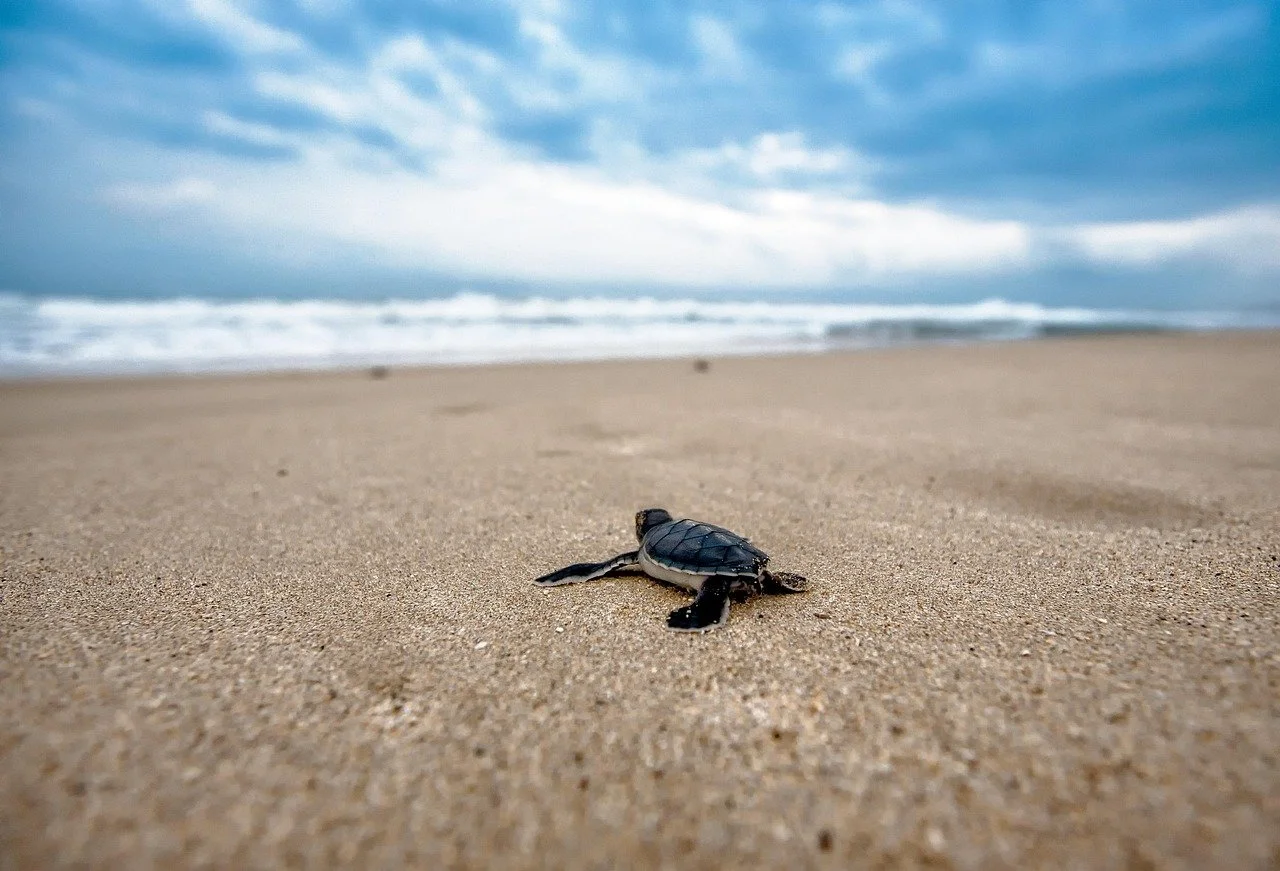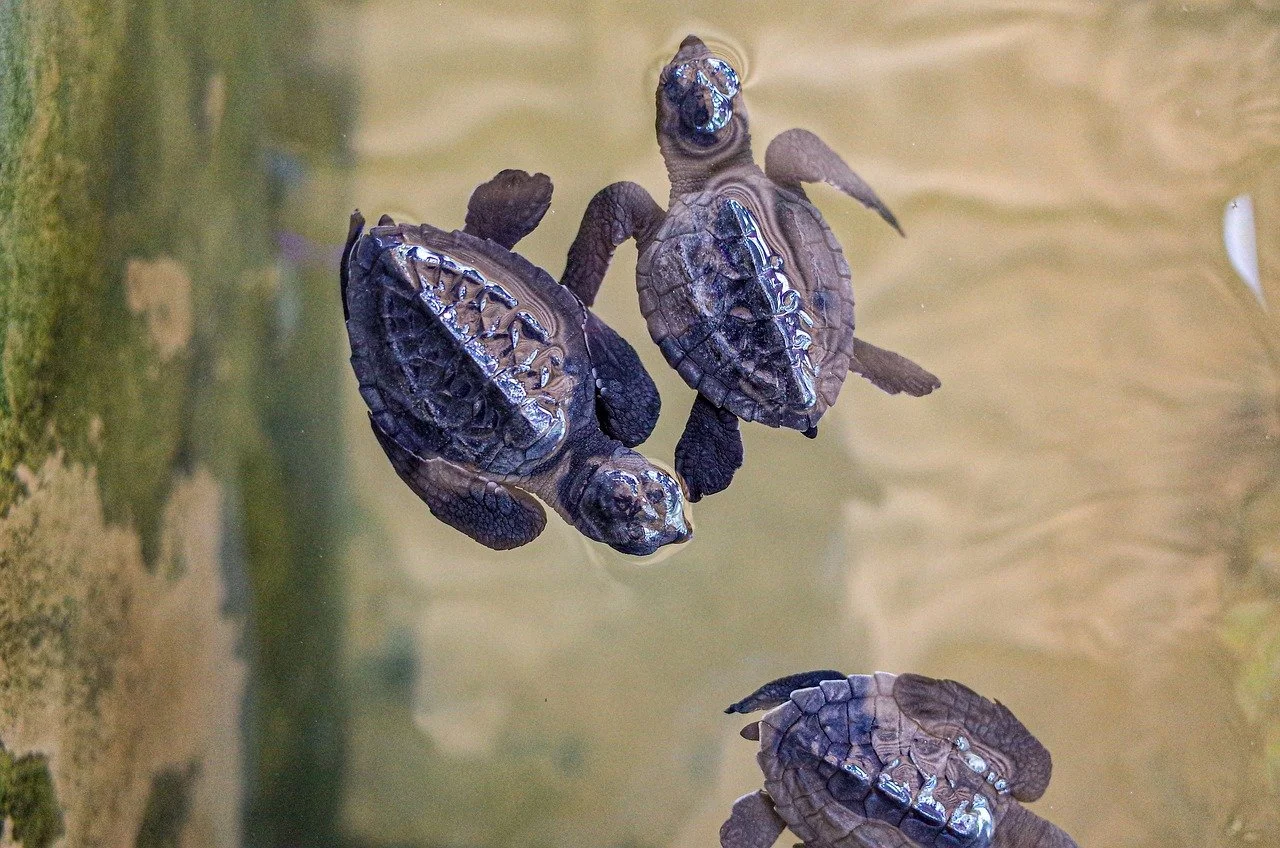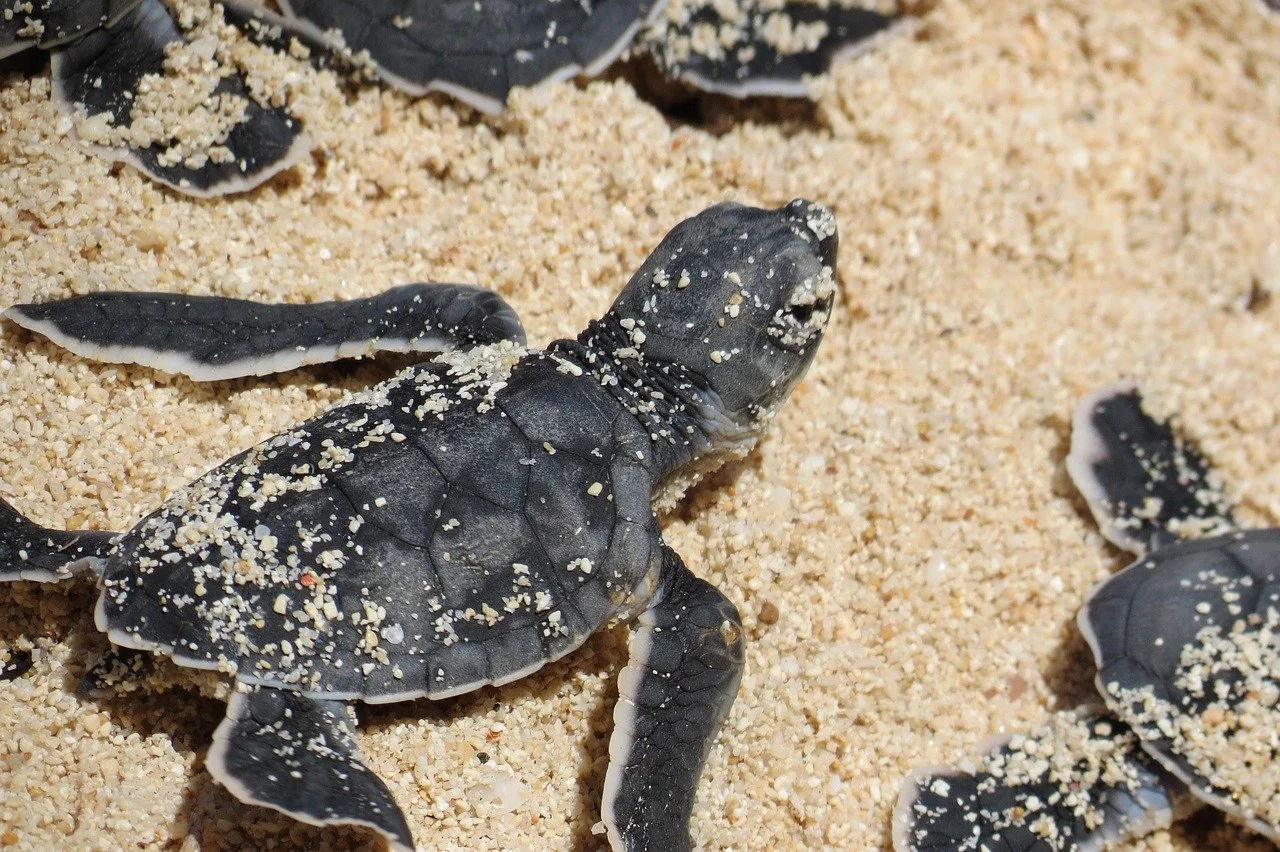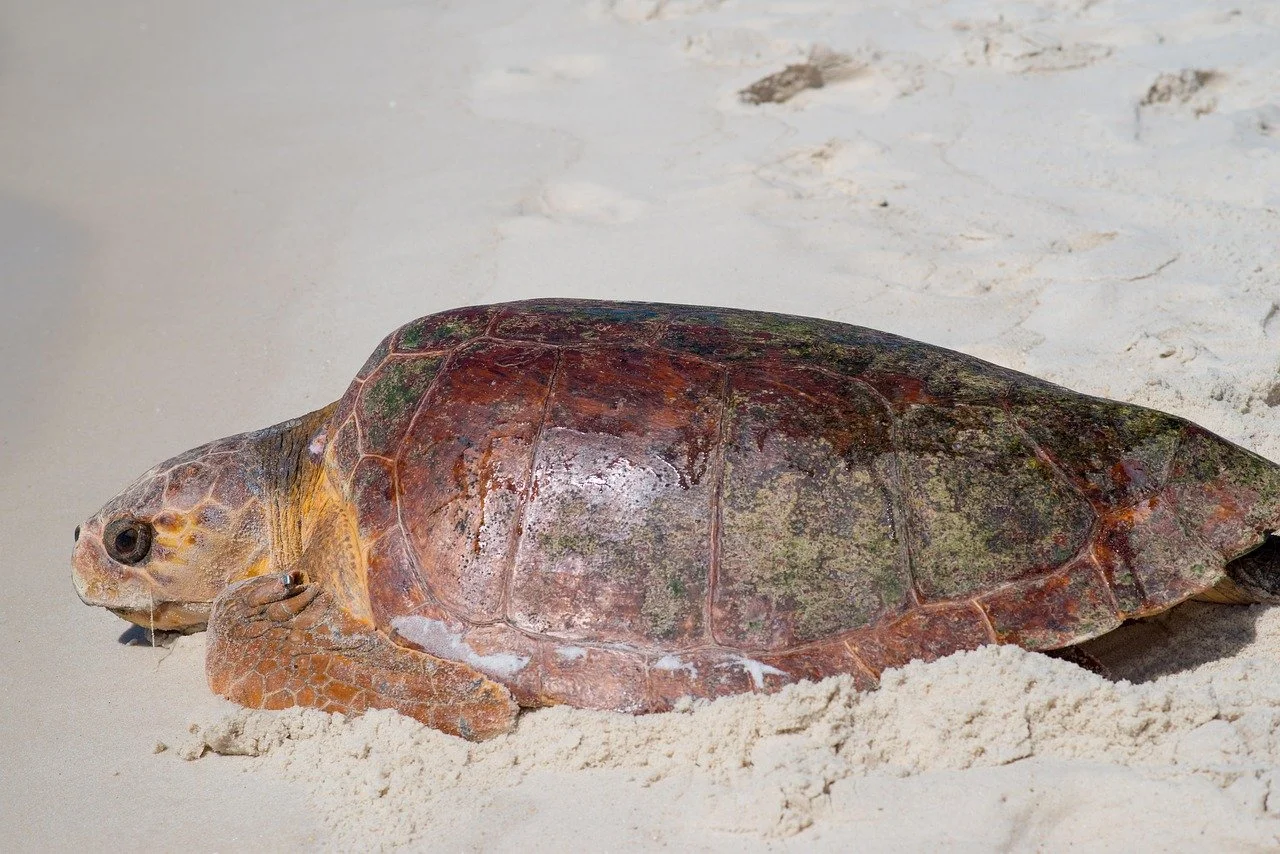Where do Baby Turtles go?
The “Lost Years”
Have you ever wondered why you have never seen baby turtles in the ocean after they hatch? I, personally, was born in Florida and have spent my whole life on beaches and boats and have never seen a baby turtle just swimming around in the ocean. This has caused me to wonder ‘where do they go?’.
This has been such a mystery to researchers and civilians alike that, after the hatchlings hatch out of their shells and go out into the ocean, scientists term those first 1-3 years of their lives at the ‘lost years’. During these ‘lost years’, baby turtles are seldom seen.
Recently, though, a marine biologist, Dr. Kate Mansfield from the University of Central Florida, and her team of talented researchers have decided to try and solve this mystery. To do this, they first attached solar-powered trackers to the backs of 17 loggerhead sea turtle hatchlings. You might be wondering, ‘Wouldn’t these trackers be too heavy for the delicate turtles?’ or ‘Won’t these trackers inhibit their growth?’ Well, these biologists have already thought of that. They created the solar-powered transmitter tags using lightweight materials and stuck them to the turtle's shells using silicon, allowing further growth and minimal discomfort for the turtle.
The drag factor caused by these trackers is minimized by the teardrop shape and because of the placement of the tags, which were placed behind and between ‘spikes’ along the turtle's vertebrae. This allows for the turtle to have minimal to no dragging feeling when swimming. There was no significant difference in growth, condition, swimming, and feeding behavior found between the turtles with the trackers and those without.
Findings:
These trackers have proven to be very effective in unraveling the mystery of the ‘lost years’. Dr. Mansfield’s findings show that the loggerhead hatchlings spent much of their time either in the North Atlantic Subtropical Gyre (a current that circulates around the Atlantic Ocean) or floating in the Sargasso Sea.
When the 17 hatchlings were released in the study, they all initially entered the North Atlantic Subtropical Gyre through the Gulf Stream. They then traveled North staying in or near the Gulf Stream. Ten Loggerhead hatchlings continued in the Gulf Stream towards the Northwestern Atlantic Ocean, usually staying off of the Continental Shelf. It is hypothesized that turtles in their ‘lost years’ tend to stay off the Continental Shelf because it is occupied by many predators, including, in some cases, adult and subadult turtles. None of these baby turtles moved westward from the Gulf Stream boundary either because the water would’ve been too cold.
Not all of these hatchlings stayed in the Gulf Stream though, 7 moved out into the Sargasso Sea. This is a sea that lies within the Northern Atlantic Subtropical Gyre and is home to giant mats of sargassum, which is a type of seaweed. The turtles left the Gulf Stream because of these seaweed mats which provide food, shelter, and even a thermal benefit for them. The floating mats of sargassum are home to many species of crab, fish, and shrimp which are some of the many foods that young turtles eat. On top of the food opportunities, the sargassum also provides shelter. When turtles are young, they are very vulnerable to being eaten by predators and, since they reside in the open ocean, there aren’t many places they can hide. The seaweed mats provide a place for them to seek shelter from predators.
The Sargasso Sea’s sargassum mats also allow the turtles to spend more time at the surface since they won’t be at risk of predation. These turtles are cold-blooded and have a very slow metabolism which causes them to have to warm up their body temperature by the sun. The sun’s UV rays are more powerful at the surface of the water, which is why they spend much of their time there.
A Brown Pelican flies across an expanse of Sargassum sea weed.
By Karl Callwood Via Unsplash
This research also shows that the seaweed mats play a role in warming up turtle's body temperature too. Dr. Kate Mansfield and her team conducted an experiment where they tested buckets of seawater filled with sargassum versus buckets of seawater without this seaweed. The experiment resulted with the water in the bucket filled with sargassum being consistently warmer than the one without.
The theory was further proven when Dr. Mansfield and her colleagues used a spectroradiometer to see how much of the light energy is reflected by the sargassum and a turtle shell which is already known to insulate the turtles. They found out that the sargassum and turtle shell both reflected about 10% of the sun’s energy proving that the seaweed and shell both play a part in insulating turtles. This is beneficial for the young turtles because, when a hatchling has more access to sunlight and insulation, their metabolic rate increases which causes them to grow at quicker rates.
Why They’re Illusive
You might be wondering, ‘If these baby turtles are all mostly constrained to a certain area, why are they still considered illusive?’ Well, that can be because of many factors.
Turtle hatchlings in general have a very high death rate when they are in their first couple years of life. For example: for every 10,000 hatchlings, only one survives statistically. Another reason may be that, since they are so small, you may not be able to see the turtles when you’re passing by in something like a boat, especially if they are hiding in sargassum mats. So, it might be harder to find them because of their size and scarcity.
These turtles might become even scarcer, though, in the future. A predictive reason we might have even more trouble finding these young turtles in the future might be due to climate change. Climate change could affect the ocean the turtles reside in because the loggerhead hatchling’s paths are environmentally constrained. This means that the environment is what keeps them on the predetermined path from the North Atlantic Subtropical Gyre, to the Gulf Stream, and to the Sargasso Sea. No turtles will usually venture out into colder waters and are guided by magnetic cues which keep them on the right path. With climate change, there might not be colder waters cueing the turtles to turn around when they wander too far from the Gyre. This might cause this species of hatchlings to be even more dispersed throughout the ocean and, therefore, more difficult to locate. It also might even cause them to venture out into dangerous territories which would make them easier for predation.
Even the sargassum in the Sargasso Sea might become harmful towards the turtles because of climate change. With warmer temperatures, the seaweed will grow almost exponentially. The issue with this is that, when sargassum starts to decompose, it releases phosphorus and nitrogen into the water. With increased amounts of sargassum, the higher concentrations of these nutrients will promote algae growth, eventually leading to an algae bloom that most ecosystems can not support. This might eventually lead to nutrient depletion and may cause the turtle’s food source to not be able to survive, forcing the hatchlings to either find a new place to reside or face the inevitability of starvation.
Conclusion
In conclusion, although loggerhead turtle hatchlings remain difficult to locate, Dr. Kate Mansfield and her team of innovative researchers provide us with valuable insights to understand the general area in which these turtles reside. This is important because it enables scientists to better identify which regions to regulate in order to protect these beautiful, fragile creatures and the ecosystems they call home.
Sources
Smithsonian Magazine. (2014). Where do newly hatched baby sea turtles go? https://www.smithsonianmag.com/science-nature/where-do-newly-hatched-baby-sea-turtles-go-180949954/
Putman, N. F., & Lohmann, K. J. (2013). Marine turtles navigate using geomagnetic cues. Proceedings of the Royal Society B: Biological Sciences. https://royalsocietypublishing.org/doi/full/10.1098/rspb.2013.3039
Sea Turtle Preservation Society. (n.d.). Sargassum serves as a safe haven. https://seaturtlespacecoast.org/sargassum-serves-as-a-safe-haven/
ResearchGate. (n.d.). Schematic of the North Atlantic Subtropical Gyre and study area. https://www.researchgate.net/figure/Schematic-of-the-North-Atlantic-Subtropical-Gyre-and-study-area-Arrows-indicate-the_fig1_235371798
University of North Carolina. (n.d.). On the surface. Endeavors Magazine. https://endeavors.unc.edu/on-the-surface/





